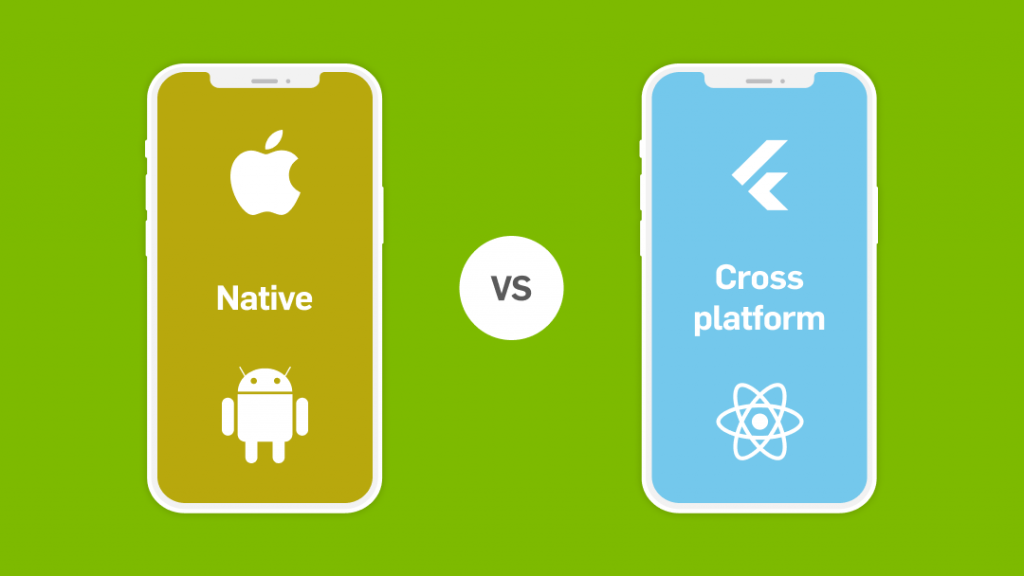Smartphone usage and ownership has grown rapidly over the years. As of 2022, 6.64 Billion people (approximately 83.72% of the population) across the globe have smartphones. Business owners and entrepreneurs are quickly realizing that, as a result of this growth, mobile touchpoints have increasingly become one of the most effective channels to reach and engage customers.
The global mobile application market has marked its presence in the digital world, achieving an unparalleled CAGR of around 14.3% and is expected to reach $100 Billion by the end of 2022. Although there are currently 4.4 Million mobile applications available on both the iOS App Store and Google Play Store, further growth is expected as more and more businesses focus on developing mobile applications. Have a look at the most downloadable apps in 2024 that shape the landscape of mobile technology and consumer behavior.
Those who are keen to launch their own mobile application will inevitably stumble upon a choice: Should I choose native or cross-platform mobile development?
Native and cross-platform application development has been a popular point of debate amongst developers for many years. How do they differ? What are the reasons behind our switch to cross-platform frameworks?
Native application development
Native applications are built exclusively for a single platform (iOS, Android or Windows). When building a native app, developers use the particular frameworks, tools and programming languages specifically required for the chosen platform. For example, most native iOS apps use Swift as a programming language, but a native Android app would use Kotlin.
Advantages of native applications:
- High performance and speed – Since native apps are developed with specific platform requirements and have direct access to the hardware installed on a device (such as memory, camera, sensors, GPS, etc.), they deliver better performance and run faster.
- Seamless UI/UX – Platform specific UI standards and guidelines result in seamless and more creative UX.
- Broad functionality – Developers have access to every API and tool provided by the platform.
- Stable maintenance and updates – Better store support as developers have direct access to all the latest features, interface elements, software development kits (SDKs), and other updated development tools.
- Stronger security – More tailored and robust security features are available, and updating security measures is quick.
Disadvantages of native applications:
- High cost – If you want to launch the same app for different platforms (e.g. both iOS and Android), you’ll need separate teams working on each platform.
- Time consuming – The work done for one platform cannot be duplicated for another, so it doubles the work for initial app development and future maintenance if you launch the same app for different platforms.
- No code reusability – Coding is done independently for separate native applications, so you can’t reuse code from one platform to another.
Cross-platform application development
Cross-platform applications are built to work on multiple platforms. For example, developers can use tools like React Native, Flutter or Apache Cordova to create apps that can be deployed on both iOS and Android.
Advantages of cross-platform applications:
- Lower cost – You only need one team to create a cross-platform app and there’s less expenses when it comes to maintenance.
- Faster development and time-to-market – Only a single cycle of development is needed to create an app that runs on multiple platforms.
- Code reusability – Since the app is created with a single cross-platform development tool, only a single code base is created.
- Greater exposure – Since they can run on multiple platforms, a larger number of users can use it.
- Easier testing and quicker updating – It’s easier to test an idea or prototype and catch bugs, and quicker to implement updates.
Disadvantages of cross-platform applications:
- Runs slower – The need for additional abstraction layers and rendering processes makes the cross-platform app slower.
- Limited functionality and support – Third-party libraries or SDKs may not support all cross-platform app development frameworks and developers may have difficulty accessing smartphone functionalities (like the microphone, camera and GPS) in ways possible for a native app.
- Limited UX – Some native UX components will be out of reach so it won’t be able to deliver the same UX experience.

Native vs cross-platform application development
When it comes down to deciding between native and cross-platform applications, it does depend on your requirements.
If you aren’t in a rush to launch an application, have the resources, and need to build an application with complex and unique features (VR, Animations, built-in games, etc.) that require superior speed, performance, visuals, and user experience, then go native.
Choose cross-platform if you have a short time-to-market deadline, a smaller budget, are looking to test or prototype an idea, or need to reach a broader customer base.
Our switch to cross-platform frameworks
The brilliant thing about technology is that it advances continuously. Until a few years ago, native application development was the only choice for companies that depended on mobile applications as a business tool.
Although they are not all created equal, several mature and competitive cross-platform frameworks exist in the market today. These superior frameworks are the tools that developers use to easily merge non-native code with platform-specific functionality (for example, developing Android and iOS applications from a single source code), which makes the mobile application development process simple.
At Expert Network, we’ve done our fair share of native development for modules of apps, which could be independently built, tested, and debugged. These were designed for various functionalities (such as reading identity cards or GPS modules) and one such notable project is Rent A Car. However, we’ve made the switch to cross-platform frameworks after extensive research, learning from previous projects, and experiencing benefits.
Cross-platform frameworks such as React Native have a well-established community, offer improved user experience, allow bigger teams, are flexible and safer. At Expert Network, we build applications with a defensive programming approach, which makes our apps robust and enables fast recovery. Although cross-platform apps are generally known to encounter more errors and bugs, our defensive programming approach allows us to implement fast recovery plans and ensures that applications run with no problems even if the code is more tedious to write. Furthermore, despite cross-platform apps’ reputation for inferior UX, we hold internal training sessions and tutorials so each of our developers are skilled enough to deliver user experiences that undoubtedly rival native applications.
Share this article on
Be part of our team
Discover how it is to work with us. Visit our Careers page.
